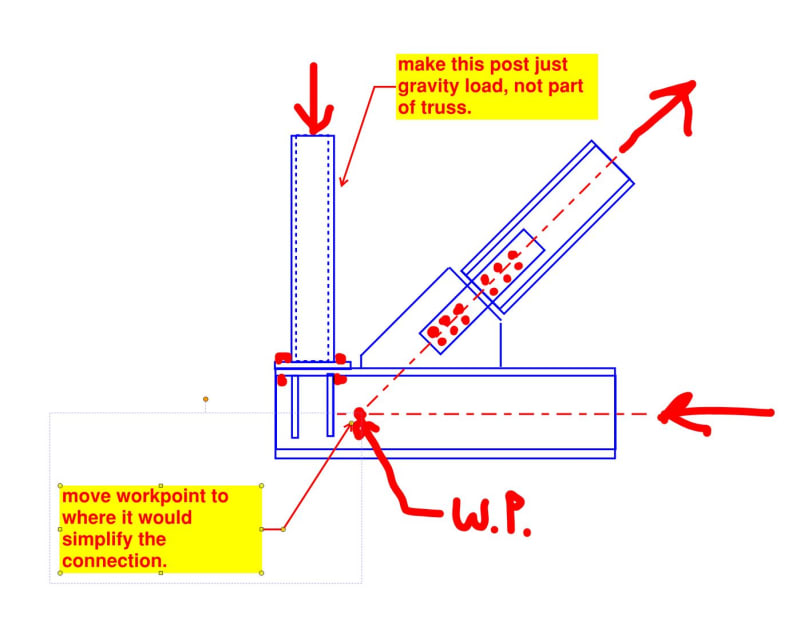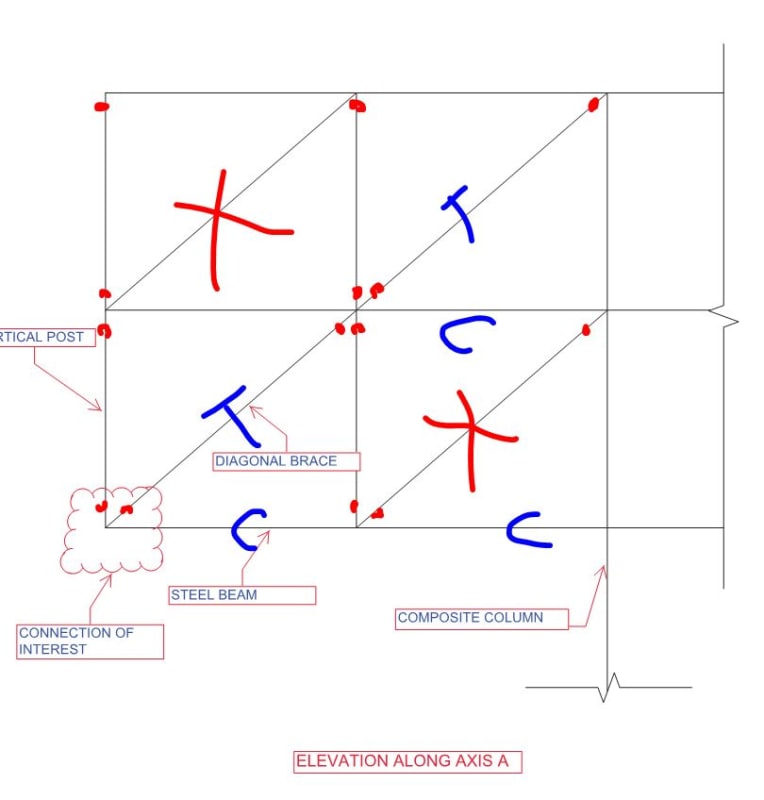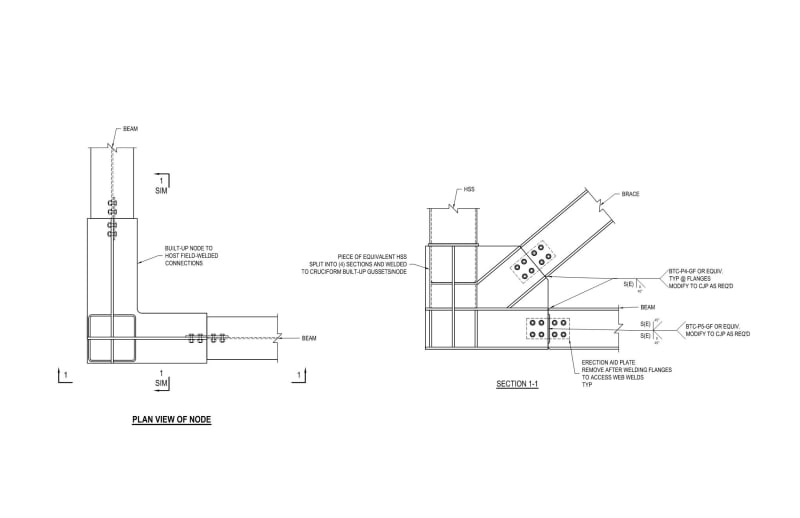Hello guys.
Recently I have come across a cantilever space frame structure( please see the attached pdf before reading the rest of the post for better clarity). for clarity of details I have attached pdf file showing some portion of the structure. while most of the connections are standard type, the vertical post, bracing and floor beam connection detail at the edge( clearly shown in the attached pdf) is a bit complicated. the two beams meet at 90 degree angle and due to the presence of bracing and vertical post, the beams develop moment at the end ( it doesn't become zero as a typical cantilever beam). the presence of this moment together with the axial load from both the post and the bracing makes the connection design a bit challenging. could you please provide some insight on how to idealize and design a fitting connection type? sample would be much appreciated.
please note that the structure acts as space frame and the floor system is composite concrete steel.
Recently I have come across a cantilever space frame structure( please see the attached pdf before reading the rest of the post for better clarity). for clarity of details I have attached pdf file showing some portion of the structure. while most of the connections are standard type, the vertical post, bracing and floor beam connection detail at the edge( clearly shown in the attached pdf) is a bit complicated. the two beams meet at 90 degree angle and due to the presence of bracing and vertical post, the beams develop moment at the end ( it doesn't become zero as a typical cantilever beam). the presence of this moment together with the axial load from both the post and the bracing makes the connection design a bit challenging. could you please provide some insight on how to idealize and design a fitting connection type? sample would be much appreciated.
please note that the structure acts as space frame and the floor system is composite concrete steel.



